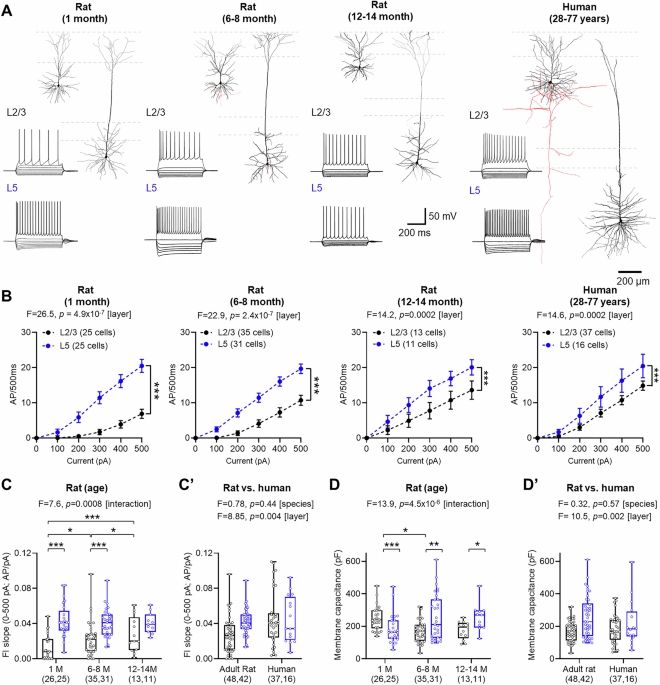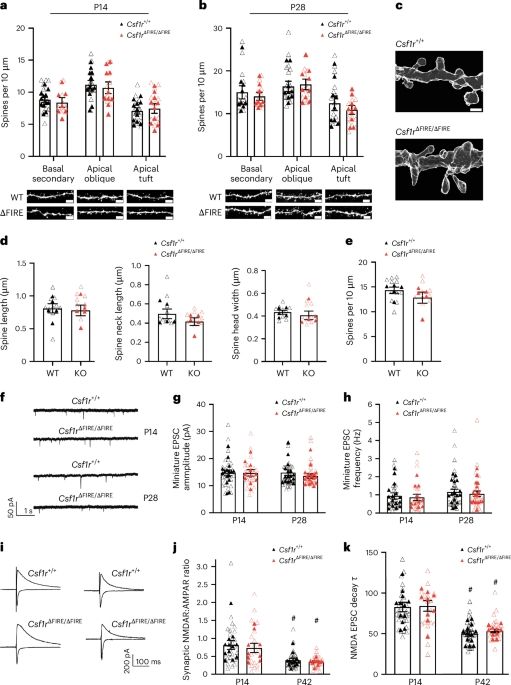@sambooker.bsky.social
Reposted
New @who.int Global Status Report on Neurology calls for urgent action to address the growing burden of neurological disorders & to promote brain health for ALL. @arinatam.bsky.social co-authored Ch4: Effective, timely & responsive diagnosis, treatment & care. Full report:
edin.ac/43r3P7U
edin.ac/43r3P7U
October 24, 2025 at 11:23 AM
New @who.int Global Status Report on Neurology calls for urgent action to address the growing burden of neurological disorders & to promote brain health for ALL. @arinatam.bsky.social co-authored Ch4: Effective, timely & responsive diagnosis, treatment & care. Full report:
edin.ac/43r3P7U
edin.ac/43r3P7U
www.biorxiv.org/content/10.1...
super excited to release this. nearly 7 years ago, we set out to investigate whether FMRP regulates excitability of neurons in living human brain tissue. we find loss of FMRP in adult neurons leads to elevated excitability, corrected by PDE4D inhibition.
super excited to release this. nearly 7 years ago, we set out to investigate whether FMRP regulates excitability of neurons in living human brain tissue. we find loss of FMRP in adult neurons leads to elevated excitability, corrected by PDE4D inhibition.

FMRP regulates adult human cortical excitability via cyclic-AMP signalling
Fragile X Syndrome (FXS) is a common inherited neurodevelopmental condition, resulting from loss of Fragile X Messenger Ribonuclear Protein (FMRP). Rodent models of FXS display cellular hyperexcitabil...
www.biorxiv.org
October 15, 2025 at 6:34 AM
www.biorxiv.org/content/10.1...
super excited to release this. nearly 7 years ago, we set out to investigate whether FMRP regulates excitability of neurons in living human brain tissue. we find loss of FMRP in adult neurons leads to elevated excitability, corrected by PDE4D inhibition.
super excited to release this. nearly 7 years ago, we set out to investigate whether FMRP regulates excitability of neurons in living human brain tissue. we find loss of FMRP in adult neurons leads to elevated excitability, corrected by PDE4D inhibition.
Hello world!
We just released a thing! In this preprint we provide evidence questioning the ability of the axon initial segment to undergo rapid structural plasticity in intact neurons from mouse, rat, and human cortex.
We just released a thing! In this preprint we provide evidence questioning the ability of the axon initial segment to undergo rapid structural plasticity in intact neurons from mouse, rat, and human cortex.
Absence of short-term axon initial segment plasticity in human, mouse, and rat cortical circuits https://www.biorxiv.org/content/10.1101/2025.09.01.672986v1
September 3, 2025 at 5:41 AM
Hello world!
We just released a thing! In this preprint we provide evidence questioning the ability of the axon initial segment to undergo rapid structural plasticity in intact neurons from mouse, rat, and human cortex.
We just released a thing! In this preprint we provide evidence questioning the ability of the axon initial segment to undergo rapid structural plasticity in intact neurons from mouse, rat, and human cortex.
Reposted
Meet the Simons Initiative for the Developing Brain: a center devoted to deconstructing the secrets of neurodevelopmental disorders and the developing brain. Read more: annualreports.simonsfoundation.org/2024/scottis... #science #neuroscience

Scottish Neuroscience Initiative Takes Basic Science From Lab to Clinic
The Simons Initiative for the Developing Brain aims to discover biological mechanisms underlying autism and related neurodevelopmental disorders and to use that information to deliver therapeutic…
annualreports.simonsfoundation.org
August 13, 2025 at 2:45 PM
Meet the Simons Initiative for the Developing Brain: a center devoted to deconstructing the secrets of neurodevelopmental disorders and the developing brain. Read more: annualreports.simonsfoundation.org/2024/scottis... #science #neuroscience
What, what! We just published our work studying GABAB receptors in human and rat brain.
www.nature.com/articles/s41...
www.nature.com/articles/s41...

Phylogenetic divergence of GABAB receptor signaling in neocortical networks over adult life - Nature Communications
GABAB receptors contribute to complex inhibition that regulates cortical neurons in a translationally relevant manner over adult life. Here, authors show stronger presynaptic inhibition in humans than...
www.nature.com
May 7, 2025 at 7:27 AM
What, what! We just published our work studying GABAB receptors in human and rat brain.
www.nature.com/articles/s41...
www.nature.com/articles/s41...
Reposted
Our paper in Nature Comms is now online! Summary below but in short we use living human brain slice cultures in a number of different ways to model dementia processes. Big team effort led by myself, @robertmcgeachan.bsky.social and @clairedurrant1.bsky.social rdcu.be/ej647

Divergent actions of physiological and pathological amyloid-β on synapses in live human brain slice cultures
Nature Communications - Understanding synapse loss in Alzheimer’s disease has been hampered by a lack of human model systems. Here, the authors show that manipulation of physiological or...
rdcu.be
April 30, 2025 at 3:22 PM
Our paper in Nature Comms is now online! Summary below but in short we use living human brain slice cultures in a number of different ways to model dementia processes. Big team effort led by myself, @robertmcgeachan.bsky.social and @clairedurrant1.bsky.social rdcu.be/ej647
Friday saw two momentous occasions. The first major study accepted from our lab 🥳 and my 5 year old reciting to me the principles of synaptic strengthening in learning and memory. Immensely proud of both...
March 8, 2025 at 7:14 AM
Friday saw two momentous occasions. The first major study accepted from our lab 🥳 and my 5 year old reciting to me the principles of synaptic strengthening in learning and memory. Immensely proud of both...
We just published a thing!
In this study, we provide compelling evidence that a lack of microglia during early brain development does not lead to wholesale alterations of synaptic and cellular function.
www.nature.com/articles/s41...
In this study, we provide compelling evidence that a lack of microglia during early brain development does not lead to wholesale alterations of synaptic and cellular function.
www.nature.com/articles/s41...

Typical development of synaptic and neuronal properties can proceed without microglia in the cortex and thalamus - Nature Neuroscience
Microglia are proposed to have a role in brain development through synaptic engulfment and paracrine signaling. O’Keeffe et al. show that certain neurodevelopmental processes attributed to microglia c...
www.nature.com
January 7, 2025 at 10:22 AM
We just published a thing!
In this study, we provide compelling evidence that a lack of microglia during early brain development does not lead to wholesale alterations of synaptic and cellular function.
www.nature.com/articles/s41...
In this study, we provide compelling evidence that a lack of microglia during early brain development does not lead to wholesale alterations of synaptic and cellular function.
www.nature.com/articles/s41...

